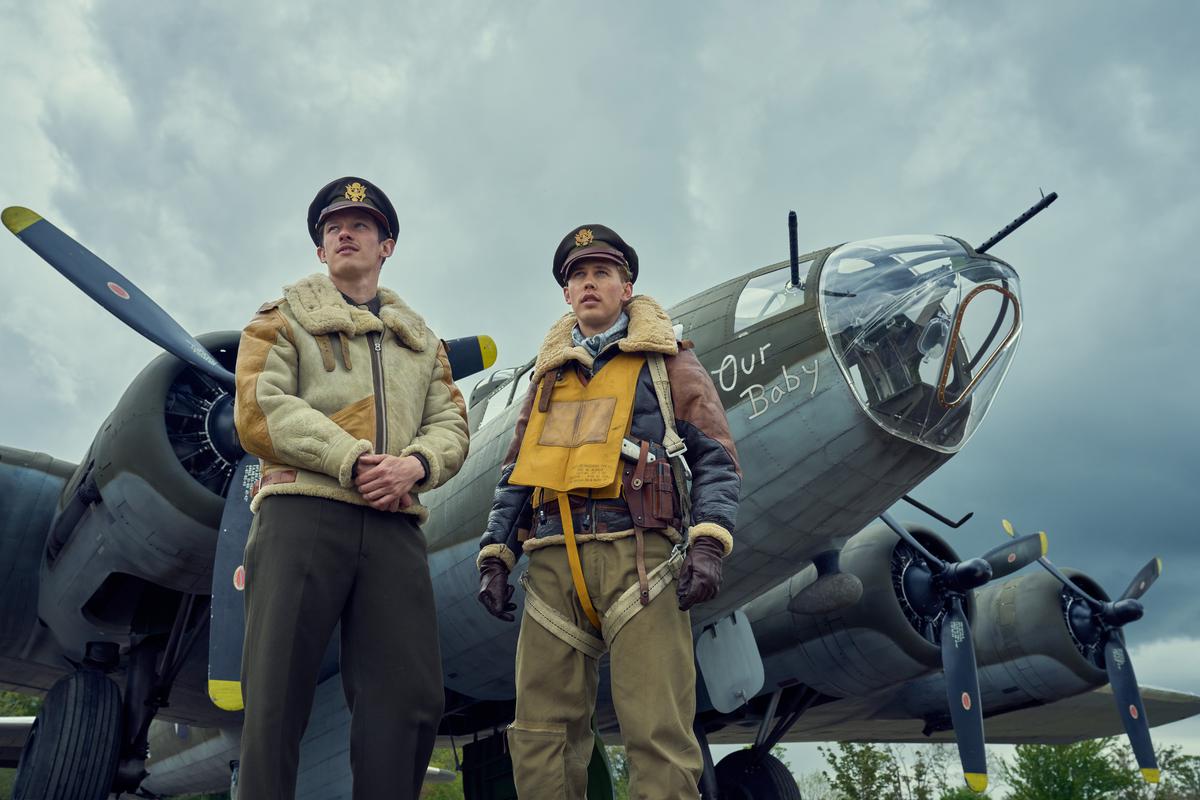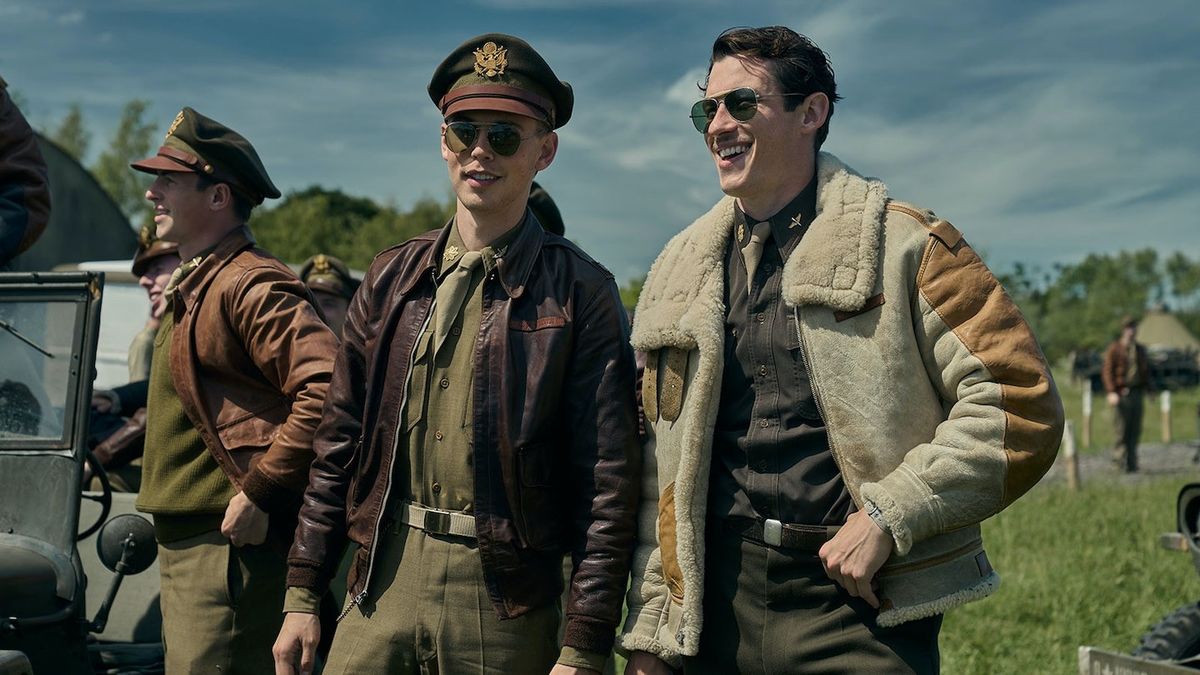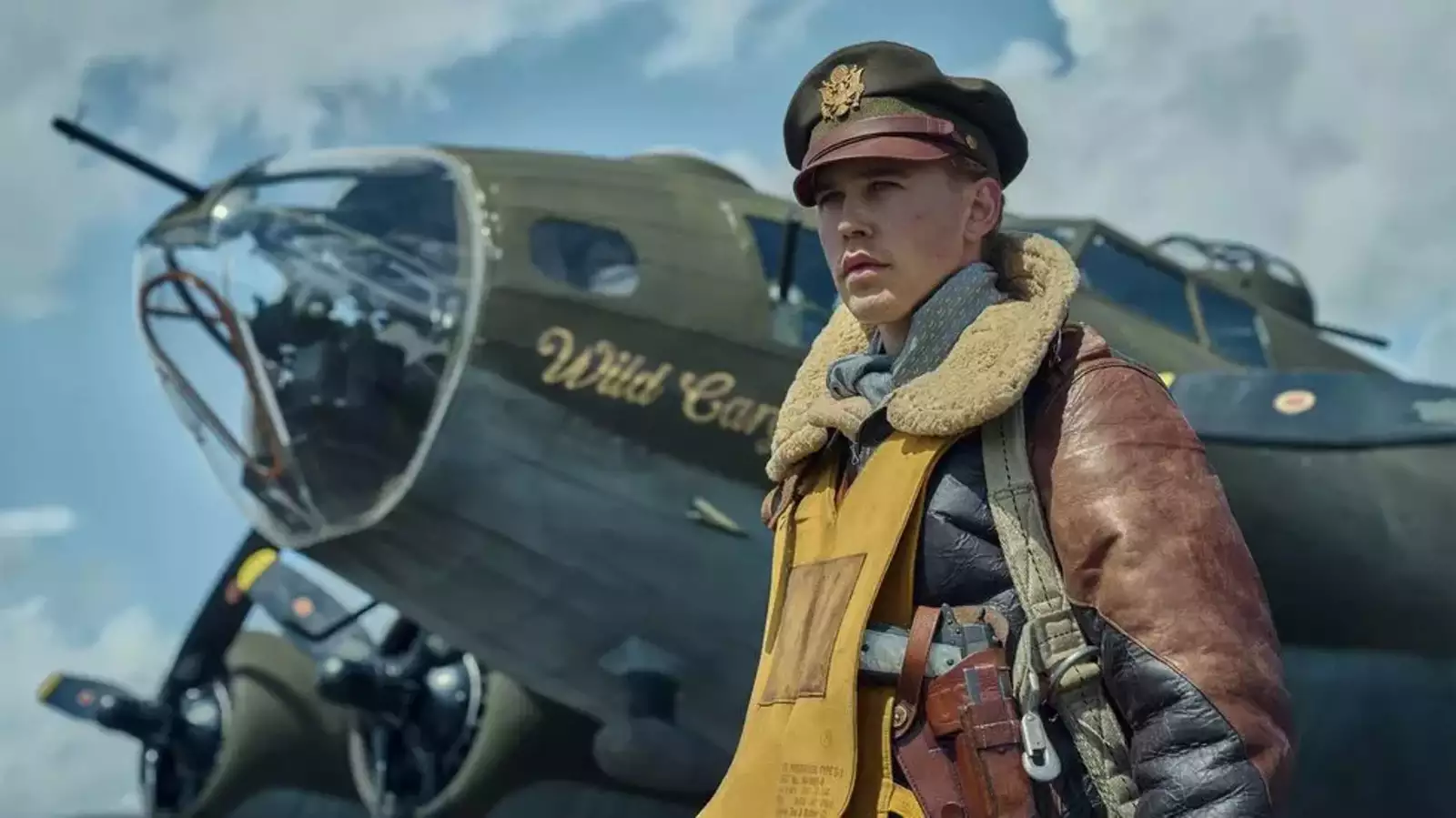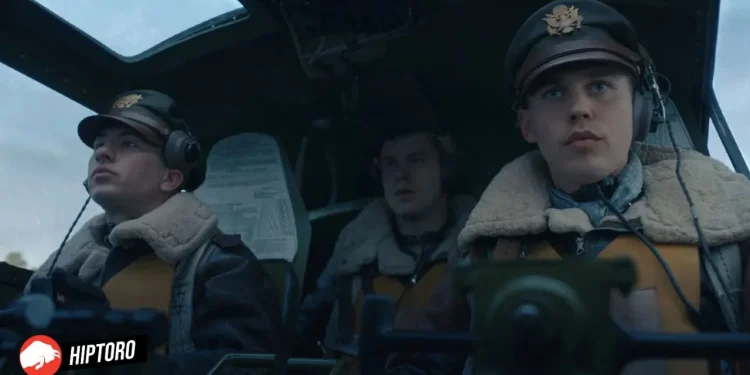In the sprawling tapestry of World War II narratives, “Masters of the Air” emerges as a poignant chronicle, etching the harrowing saga of the “Bloody Hundredth,” the 100th Bomb Group of the 8th Air Force, into the annals of cinematic history.
This Apple TV+ series has garnered attention not just for its gripping storytelling but for the meticulous attention to historical accuracy that underpins its narrative. As we delve deeper into the essence of this series, one cannot help but ponder: How closely does “Masters of the Air” adhere to the fabric of reality?

A Legacy of Valor and Sacrifice
At the heart of “Masters of the Air” is the true story of the “Bloody Hundredth,” a moniker that speaks volumes of the unit’s bravery and the steep price it paid. The statistics are sobering: 8,630 missions over 22 months, resulting in 757 men lost and more than 900 taken as prisoners of war, with 177 aircraft lost. These numbers paint a stark picture of the relentless adversity faced by these young men, most under the age of 24, as they embarked on missions fraught with danger and uncertainty.
Adapted from Donald L. Miller’s book and incorporating elements from Harry Crosby’s memoir, “A Wing and a Prayer,” the series does more than recount missions; it dives deep into the psychological and emotional toll exacted on these soldiers. Miller’s involvement as a historical adviser lends the series an unparalleled depth of authenticity, ensuring that the narrative remains anchored in truth.
Remember when watching, every part is based on a real persons experience.
They made impossible decisions in seconds and sometimes it didn’t matter which one you made. Sometimes neither option had a good outcome and friends wouldn’t make it.
Masters of the Air Ep 3 hit hard. pic.twitter.com/vIGZ3vavA8
— Pete Mitchell (@Capt_PeteF14) February 2, 2024
Masters of the Air: The Fidelity to Fact
Tom Hanks, a pivotal figure behind the series, was adamant about the importance of staying true to the historical record. His directive, “No bullsh*t. Tell the f**king story. Just as it happened,” echoes throughout the production, emphasizing a commitment to authenticity over dramatization.
This ethos resonates particularly in the portrayal of the characters of Gale Cleven and John Egan, whose nicknames “Buck and Bucky” and their backstory are meticulously accurate, reflecting the series’ dedication to historical verisimilitude.
The series also navigates the complexities of the American and British alliance with nuance, acknowledging the occasional friction while highlighting the overarching camaraderie. It presents an unvarnished view of the strategic disagreements, yet it avoids oversimplification, instead portraying a multifaceted relationship shaped by the exigencies of war.

Beyond the Battlefield
While “Masters of the Air” excels in depicting the visceral realities of air combat, its strength lies in its unflinching exploration of the human condition. The series doesn’t shy away from the brutality of war, presenting graphic scenes that, while difficult to watch, are crucial in conveying the stark realities faced by the aircrews.
These moments, from the chilling risk of frostbite to the devastating impact of enemy fire, are not merely for shock value; they are integral to understanding the full spectrum of experiences that defined the lives of these men.
The series has sparked conversations about the portrayal of wartime sacrifices, inviting viewers to reflect on the immense pressures shouldered by these young pilots and their crews. Through its nuanced storytelling, “Masters of the Air” transcends the boundaries of traditional war narratives, offering a visceral reminder of the costs of freedom and the indomitable spirit of those who fought for it.

“Masters of the Air” stands as a testament to the power of storytelling when anchored in the truth of historical events. Its commitment to accuracy, coupled with a profound exploration of the human spirit, sets it apart as a seminal work in the portrayal of World War II. As viewers, we are afforded a glimpse into the valiant hearts of the “Bloody Hundredth,” a reminder of the resilience of the human spirit in the face of overwhelming adversity.
In its faithful recounting of the trials and triumphs of the 100th Bomb Group, “Masters of the Air” not only pays homage to the past but also serves as a poignant reminder of the sacrifices made in the name of freedom. It is a series that not only captures the essence of history but also the enduring legacy of those who lived it.










